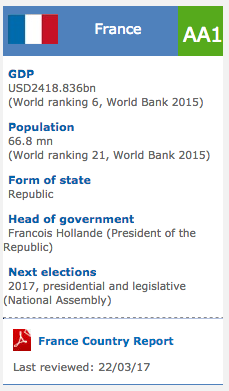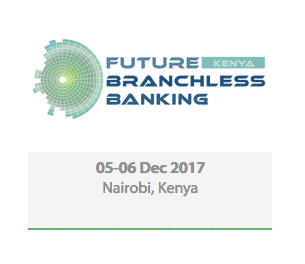Africa: Broadband infrastructure improvements enable advanced services and applications
2010/10/31
Broadband infrastructure improvements enable advanced services and applications
The use of digital media is still in its infancy in Africa while suitable broadband infrastructure on the continent is evolving. However, significant improvements in national and international fibre infrastructure and the emergence of wireless broadband access and third-generation (3G) mobile systems in recent years are now bringing the Internet to a wider part of the continent’s close to one billion population, and this is opening the way to advanced online applications and services and a convergence of telecommunications with digital media.
Requiring relatively little bandwidth, VoIP Internet telephony was the first application in this converging environment. Beginning in 2004, its use has been liberalised in many key markets in Africa but remains restricted in others. IPTV services have emerged since 2006 and now exist in at least eight African countries. With mobile penetration above 50% across the continent in 2010 and near or above 100% in key markets, mobile TV services are also available in a number of countries.
Besides communication, information and entertainment, the Internet also holds the potential to bring vast improvements in other key areas where Africa lags behind most of the rest of the world: governance, trade, health and access to education. Besides some Indian Ocean island nations, the relatively wealthy North African countries are the most advanced in the areas of e-government, e-health and e-education, but there are also some notable initiatives in sub-Saharan Africa. E-commerce and m-commerce applications are enabling African businesses to compete more effectively in the global marketplace.
South Africa is the leading market on the continent where digital media have reached a level of development to foster an associated advertising and marketing industry. The country is also making a significant contribution globally towards the growth of social networking portals. It has more Twitter users than countries like Japan, China, Spain and the Netherlands, and the number of South African Facebook users is more than doubling every year, making South Africa one of the fastest growing markets worldwide.

Mobile phones represent more than 90% of all telephone lines in Africa. As market penetration passed the 50% mark in 2010, subscriber growth slowed to below 20% p.a. The bottom of the pyramid (BoP), referring to the majority of the population that is poor, has clearly been penetrated in some of the continent’s most dynamic markets which have passed or are close to the 100% penetration mark. Most other African markets are just about to enter this stage of their development which is worrying some investors while it is exciting others.
The introduction of prepaid services and a steady decline in tariffs has meant that about half of Africa’s close to one billion people can now afford a mobile phone. However, as lower and lower income groups are being targeted, the declining Average Revenue per User (ARPU) is putting pressure on the network operators' profit margins. Literal price wars have broken out in some markets where a large number of operators have been licensed. Despite this, international investors are still very keen to enter the market through new mobile licences or shares in existing mobile operations in Africa. Some operators make more than twice the ARPU of some of their competitors in the same markets.
Newly introduced converged licensing regimes have increased the competitive pressure in a number of key markets but also allow the mobile operators to branch out into new service segments. Due to the continent's poor fixed-line infrastructure, the mobile networks are playing an increasing role in broadband Internet service provision, following the launch of third-generation (3G) services – a welcome new revenue stream in an environment of low ARPU levels. Mobile banking services are another growth area, so successful that they are threatening the traditional banking system which many people in developing countries do not have access to.
- Related Articles
-
Africa Communication Profile
2013/10/13 The use of digital media is still in its infancy in Africa while suitable broadband infrastructure on the continent is evolving. However, significant improvements in national and international fibre infrastructure and the emergence of wireless broadband access and third-generation (3G) mobile systems in recent years are now bringing the Internet to a wider part of the continent’s close to one billion population, and this is opening the way to advanced online applications and services and a convergence of telecommunications with digital media. Requiring relatively little bandwidth, VoIP Internet telephony was the first application in this converging environment. Beginning in 2004, its use has been liberalised in many key markets in Africa but remains restricted in others. IPTV services have emerged since 2006 and now exist in at least eight African countries. With mobile penetration above 50% across the continent in 2010 and near or above 100% in key markets, mobile TV services are also available in a number of countries.
- Africa News
-
- SOUTH AFRICA: KPMG's South Africa bosses purged over Gupta scandal
- WORLD: Tuition fees row: education expert warns over graduate earnings
- WORLD: UN report attacks austerity budgets for growing inequality
- FRANCE: Aluminium-Lithium Alloys Fight Back
- GUINEA: Deadly Riots Again Grip Guinea’s Bauxite Hub
- CHINA: China to Loan Guinea US$20 Billion for Access to Bauxite Reserves
- Trending Articles
-
- SOUTH AFRICA: KPMG's South Africa bosses purged over Gupta scandal
- CHINA: Life after Rosneft deal: CEFC ambitions face debt, regulatory hurdles
- CHINA: BRICS countries considering own cryptocurrency as settlement mechanism
- TANZANIA: Critic of Tanzania's Magufuli moved to Kenya for treatment of gunshot wounds
- ITALY: Italy Current Account Surplus Grows In June
- NIGERIA: Nigerian Public Officials Collect N400b Bribe in One Year












